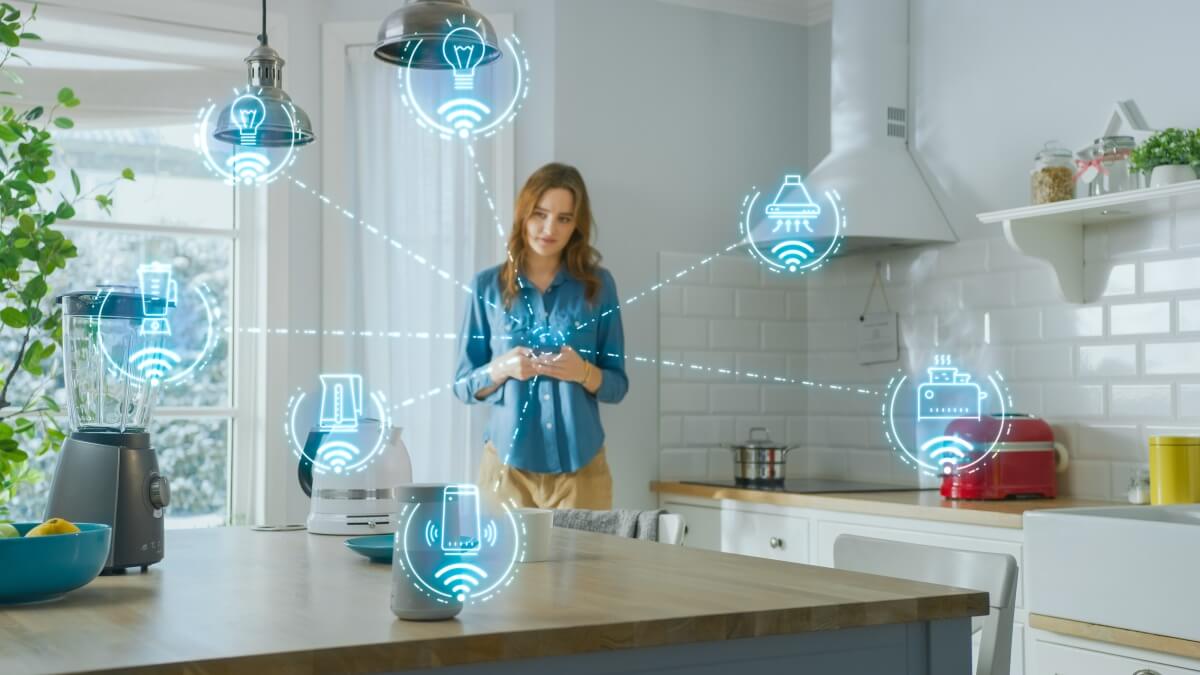The Internet of Things (IoT) and Edge computing are related because Edge computing is excellent at addressing the challenges posed by IoT, such as latency and network congestion.
Network congestion results from the high density of IoT devices we have today, the tremendous amounts of data they generate, and their performance requirements.
Because Edge computing and IoT are interconnected, people often think they’re the same thing.
But they’re not.
Edge computing is an architecture, while the IoT is a technology that benefits tremendously from using Edge computing.
This article will explain IoT, its benefits, and how it relates to computing at the Edge.
What does IoT mean?
Before we dive into how Edge computing benefits the IoT, it’s important to unpack what IoT is.
In short, IoT refers to the billions of devices worldwide that are connected to the internet. These devices communicate with each other and exchange data and information through this shared connection.
There is no limit to what qualifies as an IoT device.
From household televisions to major technological machines, if it’s connected to the internet, it’s part of the IoT.
All IoT devices have their own UID (Unique Identifier) and transmit key data worldwide.
What are IoT Devices?
Generally, anything that can monitor or sense movement, or generate data, then send that data through the internet, is an IoT device.
Some are programmed for specific purposes. An example is GPS systems in cars that estimate your time of arrival and help keep an eye on traffic conditions.
The 5 Major Types of IoT
There are an infinite number of IoT devices which can be categorized into 5 common IoT types based on usage. These are:
1. Consumer IoT
This is the IoT of everyday use. It includes home appliances like Alexa, Google Home, televisions, and lighting.
2. Infrastructure IoT
This type of IoT is included in many developed ‘smart cities’, where the systems are managed online.
3. Commercial IoT
Certain industries employ this out of necessity, like the health industry for pacemakers and the transport industry for system management.
4. Military IoT
Includes everything the military is using that requires a connection, such as surveillance drones, robots, or biometric scans.
5. Industrial IoT
This is one of the most extensive types of IoT, as it’s used when constructing control systems, housing industrial data, and creating smart agricultural machines. The energy industry is a significant user of Industrial IoT.
The Top 5 Advantages of the IoT
Several notable benefits come when businesses embrace the IoT.
For instance, the IoT provides the opportunity for companies to expand their digital capabilities and a chance to use the IoT to better their operations, becoming more protected, productive, and profitable.
The easy transfer of data is a necessity in a world of ever-evolving technology, so almost everyone benefits from IoT already. The most apparent advantages of IoT are things most people today wouldn’t think twice about. Consider the following:
1. The IoT offers users mobility
Mobility is a tremendous gift that IoT gives us, as it allows devices to connect to the internet from basically anywhere.
It also means that we can get in touch with our devices from anywhere. Phone applications can now control the lights in your house to turn on the moment you get home.
For business, this mobility is a must. Flexible working environments are becoming more common, and virtual mobility is a must. The IoT allows communication between workers and sharing of information through online channels.
2. Efficiency and productivity are optimized thanks to the IoT
Businesses are the ones that predominantly benefit from this aspect of IoT.
Having IoT in the office or general working environment allows specific tasks to be automated, making them less time-consuming than if a human worked on them.
Being able to remotely monitor product delivery and the status of company supply chains saves workers the time of checking it in person. If the machines are part of the IoT, they can easily send updates to the necessary people.
Additionally, having this established connection allows businesses to root out issues between their hardware and software.
If something is going wrong in the communication chain, it’s simple to follow the IoT to find where the disruption is coming from – and fix it. This is far more productive than going around rebooting or solving every problem you come across when trying to repair one thing.
3. The IoT reduces costs
Cost reduction is another business benefit of IoT.
When there is an online connection between devices, monitoring their status becomes easier. By enabling things like troubleshooting on all devices with only a single command, issues can be caught early on, removing the need for replacing necessary equipment.
Sending devices away to be fixed is also expensive and can cost businesses money when it’s a machine they rely on. Having your IoT devices search for problems will help catch them early.
This advantage is seen best in the manufacturing industry, where having an IoT connection reduces the time it takes to plan and perform maintenance on connected machines.
4. The IoT creates business opportunities
In online marketing, IoT devices that support artificial intelligence, advanced data-gathering abilities, and analytics, make gathering precious actionable data easier.
Companies can monitor how many visits their websites get, and physical stores can track foot traffic, analyzing customer habits.
This helps businesses enhance their marketing strategies and makes it easier to predict consumer habits.
5. Customer experience benefits from the IoT
Finally, one everyday advantage of the IoT is its impact on customer experience.
The modern customer has an expectation that a business will meet their needs.
The expectation is that customers can easily interact with companies through their phone, whether using an app or an automated chatbot.
This customer expectation is met quickly and efficiently thanks to the adoption of IoT.
Additionally, customers want accessibility when searching for products, so having an optimized website that’s easy to use on both a phone and a computer is a crucial part of IoT. It should be an easy transfer between a desktop, a web page, and a smartphone search.
IoT advantages for end-users
End users, such as consumers and employees, are the people that benefit from the implementation of IoT.
The business benefits of IoT have been discussed above, but what’s probably more important is the satisfaction the end consumer derives from the connectivity of IoT devices.
The mobility IoT provides is fantastic for employees who can work remotely or on the road when necessary. This has a domino effect of improving their job satisfaction, productivity, and any experience they provide to customers.
Accessing key information from anywhere is a huge advantage, one that employees can take advantage of more than ever, thanks to the IoT.
IoT and Edge Computing
Despite the IoT’s numerous benefits to both end-users and businesses, the technology has a data problem because the millions of IoT devices in use every day put an enormous strain on cloud data centers.
This is where Edge computing steps in.
Edge computing is a distributed computing method. This means that computing isn’t directed towards cloud servers (which can sometimes be thousands of miles away) and instead stays at the edge of the network, close to the data source.
Put simply, Edge computing keeps computational data and storage close to users in terms of network distance or geographical distance.
Often, data processing can even take place on a device itself. Thanks to Edge computing, the amount of data that needs to be sent to the cloud is significantly reduced.
Additionally, keeping data and computation closer to (or at) the source where data is initially generated comes with benefits for the IoT.
For example, Edge computing offers IoT devices:
- Fast response times.
- Low bandwidth usage.
- Improved performance.
- Enhanced privacy.
- Lower costs
- Less energy consumption.
- Reliability for critical use cases.
Edge computing and the IoT have a close relationship. Since Edge computing can run workloads on Edge devices, generally in an isolated piece of hardware not shared to a general network, IoT-collected data can be stored at the source.
When Edge computing is used for large operations such as mining, shipping, or manufacturing, the IoT devices in use benefit tremendously. This is because companies’ information is sensitive, and security is a concern in the cloud. The Edge, however, is the perfect spot for key – but delicate – information.
When data is processed locally, the command sent from an IoT device is executed within moments. With the data source close to the IoT device, bandwidth bottlenecks are avoided, and data is efficiently processed.
The IoT benefits from Edge computing
As you can see, the Edge is excellent at addressing the problems caused by the IoT.
Edge computing relieves the cloud from needing to process vast amounts of data and reduces latency issues.
IoT devices themselves also benefit from Edge-based solutions as the Edge offers enhanced privacy and better efficiency, among other advantages.
As these technologies continue to grow, it’s clear that Edge computing will play a part in enabling a better, brighter future for the vast IoT category.



